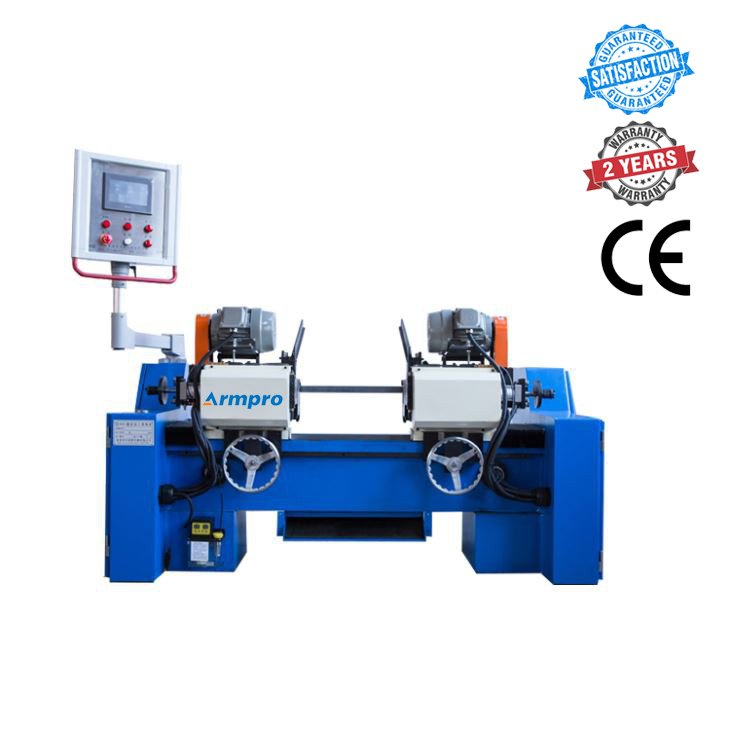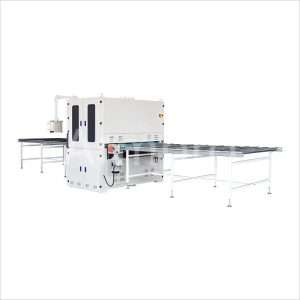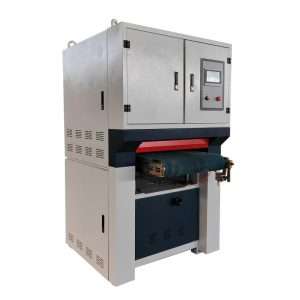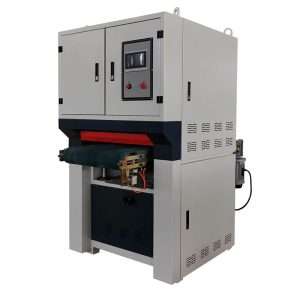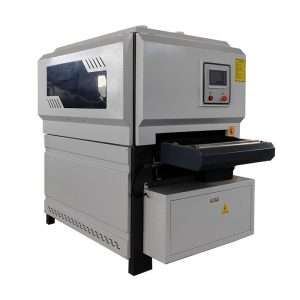Automatic Chamfering Machine vs Manual Chamfering Machine
Introduction
The process of cutting or grinding a beveled edge at an angle of around 45 degrees onto a workpiece or part is called chamfering. Chamfering is used to reduce sharp edges, improve the appearance of the workpiece, and to make it easier to handle and work with.
Chamfering is an important process in machining and is used in a wide range of applications. As can be seen in the manufacturing of machine parts, automotive components, and electronic devices. Chamfering helps improve the quality and precision of the finished product and reduce the risk of injury or damage resulting from sharp edges. Overall chamfering can be done using either manual or automatic chamfering machines. Each offers distinct advantages depending on the application. The choice of the machine depends on the material being processed, the precision required, and the production volume.
Manual chamfering machines requires an operator for positioning and feeding of the material to the machine. These machines are often used for smaller, more specific tasks where precision and flexibility are needed. On the other hand, automatic chamfering machines are created to handle high volumes of work with minimal operator intervention. These machines are ideal for large-scale manufacturing operations because they can be programmed to perform repetitive tasks while achieving consistent precision.
Understanding Chamfering and Pipe Chamfering Machines
Chamfering machines are used to create beveled edges or chamfers on workpieces such as metal bars, tubes, or sheets. They achieve precise angles and smooth edges through milling cutters or other cutting tools. These machines are crucial in industries where precise edge preparation is necessary for welding, assembly, or aesthetics.
Pipe chamfering machines are specialized tools designed to create beveled edges on the ends of pipes. These machines are crucial for preparing pipes for welding, joining, or threading. Pipe chamfering machines are available as manual, semi-automatic, or fully automatic machines. These different types of machines cater to different production and precision requirements. They are equipped with features that ensure consistent, precise, and efficient processes. These machines use cutting tools and abrasive methods to remove material from the pipe ends. This helps to create the desired chamfer angle and size. Modern pipe chamfering machines have programmable settings. These allow the operator to adjust the chamfer dimensions and angles to meet specific requirements. This level of control and precision is very important in industries where high-quality joints and smooth transitions are critical.
Pipe chamfering machines play a crucial role in many industries by ensuring that pipe ends are prepared to meet required quality and safety standards. The industries are,
- Automotive Industry - Chamfering is used in engine components such as pistons and cylinders. Proper chamfering ensures that parts fit together precisely, reducing wear, and improving the overall performance of the engine.
- Construction and Plumbing - Chamfered pipes are used in construction and plumbing to ensure leak-proof joints and efficient fluid flow. The smooth, beveled edges help the assembly and connection of pipes, that reduce the risk of leaks while improving the durability of the piping.
- Oil and Gas - Chamfering is used in preparing pipes for welding. Edges that are chamfered ensure a strong and clean weld. Which is very important for the integrity and safety of pipelines transporting oil and gas under high pressure.
- Manufacturing of Heavy Machinery: - Chamfering machines are widely used in manufacturing to prepare components for assembly and welding. The process ensures that parts have smooth edges, which improves the quality of welds and the overall assembly. This is important as precision and durability are important in the manufacturing of heavy machinery.

Manual Pipe Chamfering Machines
Manual pipe chamfering machines are designed to create beveled edges on the ends of pipes. These machines prepare these pipes for welding, joining, or threading. These machines are operated by hand, so the operator must manually feed and direct the pipe during chamfering. The primary function of these machines is to remove sharp edges and create smooth, angled finishes that enhance the fit and welding quality of the pipes. Manual pipe chamfering machines are designed to create beveled edges on the ends of pipes.
Pros and Cons of Using Manual Pipe Chamfering Machines
Pros:
- Cost-Effective- Manual chamfering machines are less expensive than automatic chamfering machines. These make them accessible for small workshops and businesses with limited budgets.
- Low Maintenance- These machines usually require minimal maintenance; this will reduce long-term operational costs and downtime.
- Simplicity- These machines require minimal training and technical knowledge and are simple to operate and maintain.
- Versatility- Manual chamfering machines can handle a wide range of pipe sizes and materials.
- Control– The machine operators have direct control over the chamfering process. This allows them to make the necessary adjustments in time to achieve the required results.
Cons:
- Labor-Intensive- The manual chamfering operation requires significant physical effort and time from the operators.
- Inconsistent Quality- The quality of the chamfer can vary depending on the operator’s skill and experience. This will lead to potential inconsistencies in and between the finished products.
- Limited Throughput- Manual machines are not suitable for high-volume production due to their slower processing speed and the need for continuous operator involvement.
- Ergonomic Strain- Prolonged use can lead to physical strain and fatigue for operators, impacting productivity and health of the worker.
- Potential for Errors- Human errors and mistakes can affect the quality and precision of the chamfered edges.
Manual pipe chamfering machines are ideal for specific applications where flexibility, control, and cost considerations are critical. Suitable Scenarios for Using Manual Pipe Chamfering Machines,
- Small-Scale Operations- Workshops or businesses that handle low to medium production volumes will benefit from the affordability and versatility of manual chamfering machines.
- Custom Work- Manual chamfering machines offer the precision and adaptability needed to achieve specific chamfer angles and finishes tailored to unique requirements.
- Portability- Thanks to their portability and ease of setup, manual chamfering machines are mostly suitable for fieldwork and on-site projects.
- Educational Purposes- Manual chamfering machines provide students and apprentices with hands-on experience in machining techniques. This will help them to understand the chamfering process and equipment operation in person.
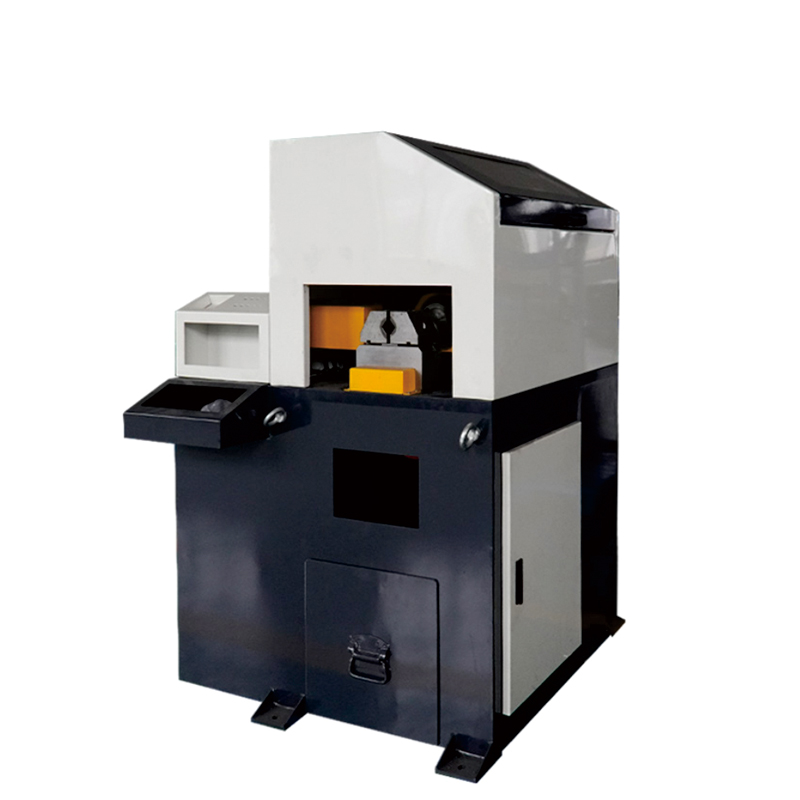
Automatic Pipe Chamfering Machines
Automatic pipe chamfering machines are designed to create beveled edges on the ends of pipes, preparing them for welding, joining, or threading. These machines are operated automatically with minimal manual intervention by an operator. They use advanced control systems for precise adjustments to get chamfering angles and depths. These ensure consistent and high-quality results. The process involves feeding the pipe into the machine, clamping it securely, and then chamfering with rotating cutting tools. These machines can handle different pipe sizes and materials, providing versatility in applications.
Pros and Cons of Using Automatic Pipe Chamfering Machines
Pros
- Efficiency and Speed- Automatic pipe chamfering machines significantly reduce processing time compared to manually doing the machining process. They are ideal for high-production environments because they can handle large volumes quickly.
- Consistency and Precision- These machines ensure uniform chamfers on every pipe. This will enhance the quality and reliability of the final product. Since the process is automated it minimizes human error, that leads to a more consistent result.
- Reduced Labor Costs- Since the process is automated, fewer workers are needed to oversee the process. This reduces the costs needed for human labor.
- Safety- Automation reduces direct human interaction with machinery, lowering the risk of accidents and injuries. Safety mechanisms in these machines further enhance workplace safety.
- Versatility- Automatic chamfering machines can handle various pipe sizes and materials, making them suitable for more diverse industrial applications. They can be programmed to perform multiple tasks.
Cons
- High Initial Investment- Automatic chamfering machines are expensive to purchase and install.
- Maintenance and Repairs- These machines require regular maintenance and repairs, which can be costly and time-consuming.
- Complexity- Operating and programming automatic chamfering machines can be a complex process. This requires skilled personnel to operate.
- Energy Consumption- These machines typically consume more energy compared to manual machines. This would lead to higher operational costs.
- Space Requirements- Automatic chamfering machines are often larger and require more space than manual machines. So, a large space is needed for these machines to operate.
Automatic pipe chamfering machines are ideal for high-production environments. Suitable Scenarios for Automatic Pipe Chamfering Machines,
- High-Volume Production- These machines are ideal for industries that require the chamfering of large quantities of pipes quickly and consistently. Machines speed and efficiency make them suitable for high production environments, like automotive and aerospace manufacturing.
- Precision and Quality- Automatic machines excel in applications that require precise and uniform chamfering. They help to ensure consistent quality across all pieces. Which is essential in sectors like Automotive, plumbing, and construction where high standards are crucial.
- Complex Chamfering Requirements- These machines are well-suited for tasks requiring complex chamfering, like double-head chamfering that involves both inner and outer corners and end faces simultaneously. This capability is useful in producing copper pipes for air conditioning systems and other specialized applications.
- Safety and Labor Reduction- Automatic chamfering machines minimize direct human interaction, reducing the risk of accidents and allowing for a safer work environment. So, these are suitable for workspaces with limited labor and that focus on safety.

Comparison Between Manual and Automatic Pipe Chamfering Machines
- Comparison of Efficiency
Manual Pipe Chamfering Machines - Manual chamfering machines are labor-intensive and time-consuming. The chamfering process relies heavily on the operator's skill and speed. While they are suitable for small-scale use, they are less efficient for high-volume production. The operator must manually handle the pipe, position it correctly, and operate the chamfering tool. This whole process increases the time it takes to finish the product.
Automatic Pipe Chamfering Machines - By automating the chamfering process automatic machines significantly enhance efficiency. They feature options like automatic feeding, clamping, and tool operation, which helps to reduce the time it takes to manufacture the product. These machines are ideal for large-scale production environments since they can handle multiple pipes simultaneously and consistently. The automation of repetitive tasks reduces bottlenecks and increases overall output.
- Comparison of Precision and Quality of Work
Manual Pipe Chamfering Machines - The quality of work on manual machines can vary depending on the operators. The precision of the chamfer depends on the operator's expertise and consistency in handling the machine. Variations in pressure, angle, and speed can result in inconsistent chamfering. This leads to inconsistent quality between items produced.
Automatic Pipe Chamfering Machines - Automatic machines provide superior precision and consistent quality. They are equipped with advanced controls and sensors that ensure each chamfer is identical to the previous one. Automation minimizes human error and maintains high standards of precision. This consistency improves the overall quality of the finished product.
- Comparison of Operational Safety
Manual Pipe Chamfering Machines - Manual machines pose a higher risk of accidents and injuries due to the need for continuous human intervention. Operators must handle sharp tools and heavy pipes that increases the potential injuries. Additionally, the manual process can lead to fatigue, which further increases the risk of accidents.
Automatic Pipe Chamfering Machines - Automatic chamfering machines enhance safety by reducing direct human interaction between the machine and pipes. The automated processes are enclosed and monitored by sensors. This decreases the likelihood of accidents.
- Comparison of Cost-Effectiveness
Manual Pipe Chamfering Machines - Manual machines have a lower initial cost compared to automatic machines, making them attractive for small businesses or low-budget operations. However, the long-term operational costs can be high due to lower efficiency, higher labor costs, and the inconsistent quality leading to rework. Over time, these factors can reduce overall cost-effectiveness.
Automatic Pipe Chamfering Machines - While automatic machines require a higher initial investment, they offer significant long-term cost savings. Their high efficiency reduces labor costs, and the consistent quality of work minimizes rework and material wastage. The increased output and improved safety further enhance their cost-effectiveness. This makes them a wise investment for large-scale and high-precision operations.
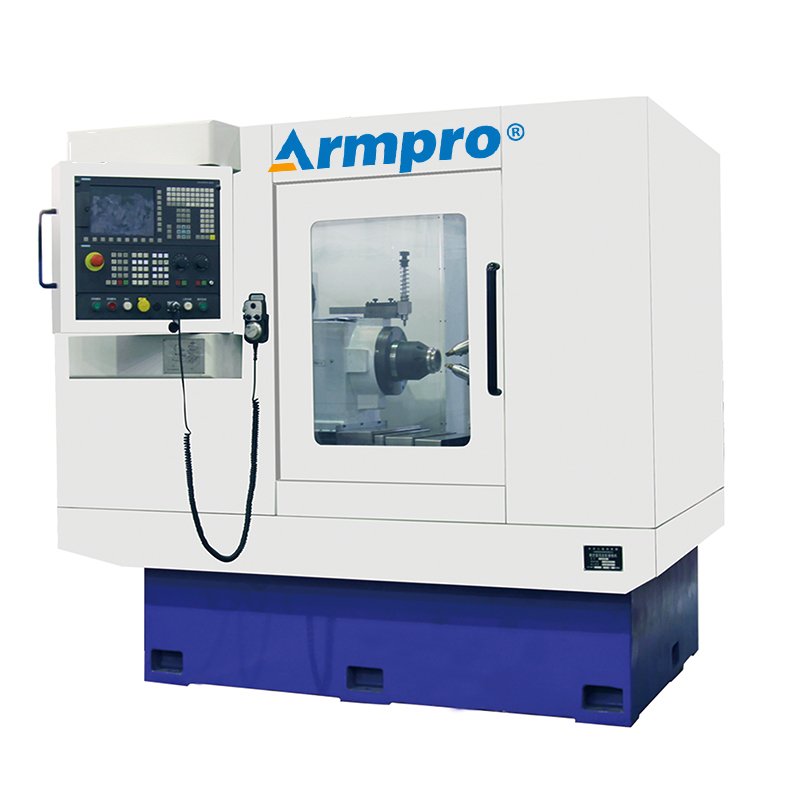
Conclusion
In conclusion, the choice between manual and automatic pipe chamfering machines significantly impacts operational efficiency, precision, quality, safety, and cost-effectiveness. Manual chamfering machines are cost-effective and suitable for small-scale or custom tasks. But they are labor-intensive and prone to inconsistencies due to human errors, making them less suitable for high-volume production. They also pose greater safety risks and can lead to operator’s fatigue.
On the other hand, automatic chamfering machines have higher initial investment and maintenance requirements. But they offer superior efficiency, precision, quality, and consistency, making them ideal for large-scale manufacturing environments. These machines enhance safety by reducing human interaction and can handle complex chamfering tasks with consistent quality.
Therefore, selecting the appropriate chamfering machine depends on the specific operational needs, production volume, and precision requirements that you require. Choosing the correct chamfering machine will influence operation productivity, product quality, and overall operational costs.
Don't forget to share this post!
Related Products
CONTACT US
Tell us your raw material and working details to get quotations within 24 hours.
WhatsApp Us: +86 159 27 555863

Want the best price & newest metal working machinery buying guide,tips and trends sent straightly to your box?Sign up for Armpro's monthly newsletter,we're free for your consultation and Offer you the most suitable working solutions!
The Buyer's Guide
- Tapping Machine: The Ultimate Buying Guide in 2024
- Electric Tapping Machines:the Ultimate Buying Guide in 2024
- Drilling Machine: The Ultimate Buying Guide in 2024
- Drilling milling Machine:The Ultimate Buying Guide in 2024
- CNC Tapping Machine :The Complete Buying Guide in 2024
- Pipe chafering Machine:The Complete Importing Guide in 2024
- Radial drilling Machine:The Complete Buying Guide in 2024
- Thread rolling Machine:The Complete Buying Guide In 2024
- Pillar Drilling Machine:The Ultimate Buying Guide in 2024
- Drilling And Tapping Machine:The Complete Buying Guide in 2024
Most Popular

Tell us your material or budget,we'll reply you ASAP within 24 hours
